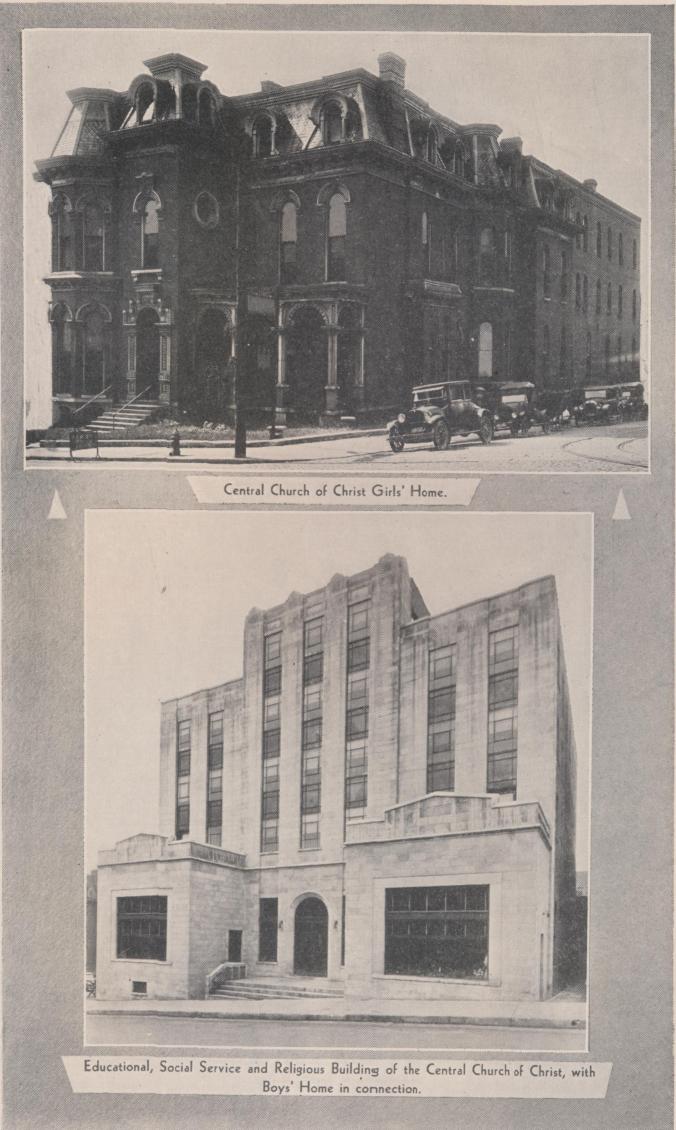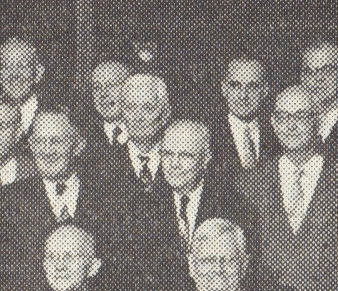.
CENTRAL CONGREGATION, NASHVILLE
BY E. H. IJAMS.
Members of the Central church of Christ, Nashville, Tenn., met for the first time on Sunday, October 4. The first meeting was devoted to worship and organization, and was a very significant service because of its simplicity and spirituality. Humility and reverence characterized everything said and done. The Central congregation is meeting for the present in a residence located on the church property. The buildings which will house the activities of the church later are under construction, but will not be available for sixty or ninety days. In the meantime the congregation will continue to meet in the residence building at 143 Fifth Avenue, North. The Central congregation is beginning its meetings at this time, in advance of the completion of its buildings, border “to take heed to itself” and study the all-important subjects of Christian grace and growth. It has planned an extensive program of gospel teaching and preaching, coupled with an equally extensive program of good works. The brethren joining hands and hearts in this work realize that consistent service in the name of Christ requires a high degree of individual Christlike devotion, spirituaI-mindedness, and godliness of character. Hence, the Central congregation is resolved to look very carefully to itself, and is making the most of present opportunities to build itself up in spiritual understanding and grace, whereby it can “offer service well pleasing to God with reverence and awe.” The present congregation will work and pray for the grace to imitate the apostle Paul, who said: “I press toward the mark for the prize of the high calling of God in Christ Jesus.” Its meetings will be planned with this purpose in view. The elders of the Central church of Christ are Dr. J. S. Ward, C. E. W. Dorris, J. E. Acuff, and E. H. Ijams. After a prolonged period of study and prayer, these brethren were chosen with the unanimous approval of the congregation. No doubt their selection will be quite generally approved wherever these brethren are known. Dr. Ward was for more than twenty years associated with David Lipscomb and others in the work of the Nashville Bible School and of David Lipscomb College. Brother Acuff is one of the trustees of Burritt College and is well and favorably known as an elder and preacher in the church of Christ. Brother Dorris has contributed many fine articles to the Gospel Advocate during the many years in which he has preached and lived the truth of Christ. Brother Ijams is a member of the present faculty of David Lipscomb College and an experienced teacher. With these loyal and mature brethren as elders, nothing can be expected of the Central church of Christ but unquestioned loyalty and steadfastness to Christian truth and purpose. The program of work outlined by the Central congregation ought to appeal to the best aspirations of every Christian. It is located in a field of abundant opportunity. It will have in the heart of the city an auditorium in which to hold gospel services every day in the week. Every day except Sunday these services will be broadcast by radio station WDAD. The congregation is also preparing to systematically seek the sick and the needy and minister to their necessities. It is also planning to “go teach” the erring and the unsaved and try to bring them to a knowledge of the truth. Daily Bible lessons will be given to all high-school or college students who will attend them in the afternoon after school. Several able Christian teachers have agreed to give night lessons to those who want to prepare for some definite form of Christian service or leadership. In addition to all this, the congregation will try to give constant heed to the language of the great commission, which says: “Go teach all nations.” In pursuance of this purpose, the congregation has already taken over in full or in part the support of these brethren laboring in mission fields: C. M. Sitman, Jr., Amite, La.; J. P. Sanders, Jackson, Miss.; W. O. Norton, Hartselle, Ala.; Hugh E. Garrett, Columbus, Ga.; C. W. Landers, Pensacola, Fla.; T. H. Burton, Union, S. C.; J. W. Shepherd, Richmond, Va.; Roy Vaughn, Mississippi; J. A. Hines, Fort Collins, Col.; John Sherriff, South Africa; W. Percy Pittman, North India. In short, the Central church of Christ proposes to emphasize “doing” the word, as well as “hearing” it, and to make the doing humble, godly, and in every respect consistent with all the teaching of the New Testament. The congregation hopes to show its faith by its work. Brother A. M. Burton and the other brethren associated with him in undertaking this work have set these high standards of achievement with the clear understanding that they can be accomplished, not with material means or with organization, but only through the personal devotion, sacrifice, and zeal of men and women whose minds and hearts are truly converted to the gospel of Christ. Sustained effort to serve God with works of faith and righteousness must depend on the God-given strength which comes to the sincere, spiritual-minded followers of Christ. Therefore, the members of the Central church of Christ ask the prayers of brethren everywhere to the end that they may, individually and collectively, offer fruitful service to God with reverence and humility. The elders will be glad to have encouragement and counsel from any fellow worker in the vineyard of the Lord. Address any of them at 143 Fifth Avenue, North, Nashville, Tenn. It is perhaps well for brethren at large to remember that the Central congregation at present has very limited quarters in which to work and worship. Much of the work which it plans to do must be deferred until its buildings and equipment are in place. It cannot at present invite the general public to its services. However, reports of progress will be given out from time to time, and announcements made as rapidly as preparations are made to take up the different phases of the work. In the meantime the Central congregation very earnestly requests the prayers of all God’s people.
Gospel Advocate, October 8, 1925, p. 976
—Thanks to Hugh Fulford for emailing me this item in digital form. I have in my files a color postcard of the buildings which housed Central Church (not the building you see now at 145 5th Avenue, North). One of my favorite antique-store postcard finds, above is scan of it. These buildings were purchased from the Timothy family (owners of a downtown Nashville dry goods firm) by Andrew Mizell Burton et al. in the summer of 1925. Both had lots behind the buildings on which, in late fall of 1925 as the article indicates, an auditorium was constructed. When ground for it was broken the congregation was having around 150 per Sunday. It could seat 1000 and by the end of the decade it would be full most weeks. Until the construction was complete they met in the parlor of the mansion…I believe…on the right. The postcard shows the auditorium behind the row house on the left…it is the one-story addition running straight back to the alley. In December 1928 the ‘Administration Building’ of five stories plus basement was completed with Nicholas Brodie Hardeman preaching in a special dedication meeting. It is/was art-deco and was built by famed local firm Foster & Creighton. In about 1987 the facade was bricked and new windows installed. Across Commerce Street towards Broadway (and almost directly across the street from the Ryman Auditorium) stood an old hotel/boarding house which Burton purchased for use as the “Girls’ Home.” Boys lived in dormitory space above the administration building; girls in the Girls’ Home. Many romances developed as you would imagine. I have spoken to dozens of former residents, some now dead, of these homes and they remember it was a very special time of their lives.The photograph below appeared in Burton’s 1932 book Gleanings.









